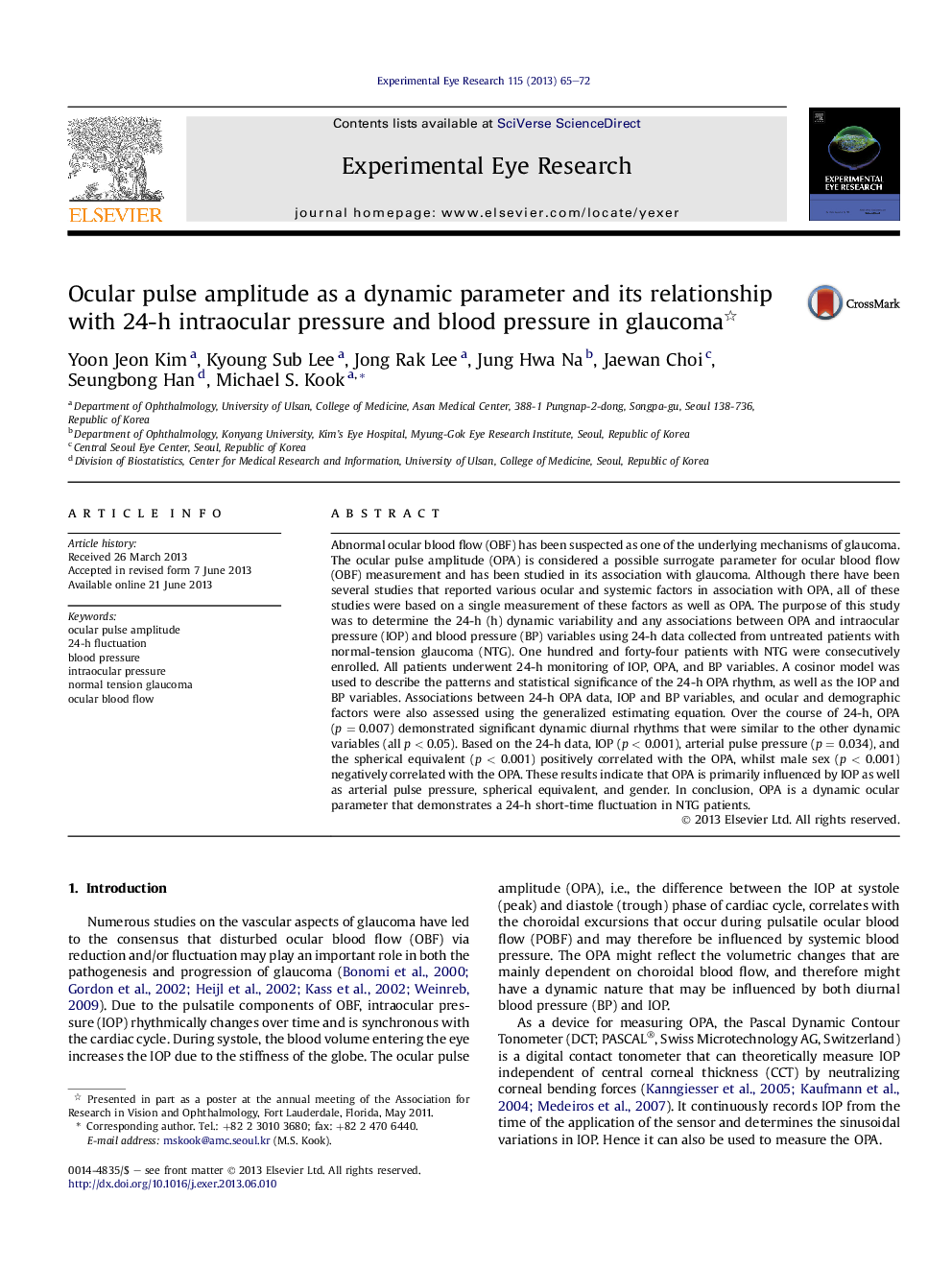| کد مقاله | کد نشریه | سال انتشار | مقاله انگلیسی | نسخه تمام متن |
|---|---|---|---|---|
| 6197102 | 1602607 | 2013 | 8 صفحه PDF | دانلود رایگان |

- Ocular pulse amplitude (OPA) demonstrates dynamic diurnal rhythms over 24Â h.
- OPA is primarily influenced by intraocular pressure based on 24Â h data.
- OPA has correlates with spherical equivalent and gender based on 24Â h data.
- OPA shows high inter-individual variability.
Abnormal ocular blood flow (OBF) has been suspected as one of the underlying mechanisms of glaucoma. The ocular pulse amplitude (OPA) is considered a possible surrogate parameter for ocular blood flow (OBF) measurement and has been studied in its association with glaucoma. Although there have been several studies that reported various ocular and systemic factors in association with OPA, all of these studies were based on a single measurement of these factors as well as OPA. The purpose of this study was to determine the 24-h (h) dynamic variability and any associations between OPA and intraocular pressure (IOP) and blood pressure (BP) variables using 24-h data collected from untreated patients with normal-tension glaucoma (NTG). One hundred and forty-four patients with NTG were consecutively enrolled. All patients underwent 24-h monitoring of IOP, OPA, and BP variables. A cosinor model was used to describe the patterns and statistical significance of the 24-h OPA rhythm, as well as the IOP and BP variables. Associations between 24-h OPA data, IOP and BP variables, and ocular and demographic factors were also assessed using the generalized estimating equation. Over the course of 24-h, OPA (p = 0.007) demonstrated significant dynamic diurnal rhythms that were similar to the other dynamic variables (all p < 0.05). Based on the 24-h data, IOP (p < 0.001), arterial pulse pressure (p = 0.034), and the spherical equivalent (p < 0.001) positively correlated with the OPA, whilst male sex (p < 0.001) negatively correlated with the OPA. These results indicate that OPA is primarily influenced by IOP as well as arterial pulse pressure, spherical equivalent, and gender. In conclusion, OPA is a dynamic ocular parameter that demonstrates a 24-h short-time fluctuation in NTG patients.
Journal: Experimental Eye Research - Volume 115, October 2013, Pages 65-72